MOZA Racing R5 Bundle
MOZA racing is definitely not an unknown name among sim racers. Since entering the world of sim racing in September 2021, they have quickly built an extensive product line. This means they appeal to both new and experienced sim racers. MOZA Racing has everything in store, ranging from essential parts such as pedals and wheelbases to peripherals such as shifters and handbrakes, all integrated into their own ecosystem.
After previously reviewing the HGP Shifter and the HBP Handbrake from MOZA Racing, we have been sent a complete bundle this time. It is our honor to review the MOZA Racing R5 bundle. As extras we also received the “SR-P Lite Clutch Pedal” and the “Performance Kit for R5 Bundle” for the brake pedal.
At the time of writing, the MOZA Racing R5 bundle is for sale in their own webshop for €639.00. The SR-P Clutch Pedal has a price tag of €44.00 and the upgrade with the Performance kit is currently €31.90. These prices are all without VAT and shipping costs, which may vary per country.

Packaging & Contents
MOZA Racing’s shipment is neatly delivered to our home in three packages. Initially, we receive a single large brown box through DPD, containing the product box for the R5 Bundle. The next day, DHL arrives at our doorstep with separate boxes for the SR-P Lite Clutch Pedal and the Performance Kit, which are shipped separately from the bundle.
Upon opening the large brown box, we discover an appealing blue and white product box, featuring extra plastic corner protectors to safeguard its edges. However, it’s wise not to underestimate the challenges posed by some delivery services. Unfortunately, our product box emerged from the brown outer box with one corner slightly damaged. That said, MOZA has delivered a sleek product box with a clean design. The top of the box is a solid blue color with white text, while the sides showcase white backgrounds adorned with product photos. Upon opening the box, we find an insert made of egg carton-shaped cardboard, neatly presenting the steering wheel alongside the wheelbase’s adapter and a pouch containing the manual and a sheet of stickers. After removing the top layer, we get to the substantial contents. In this layer, we discover the R5 wheelbase, complete with the table clamp, the throttle and brake pedals attached to the baseplate, and a number of plastic bags. Among these bags, there’s one with a UTP cable, another containing a power cable and a USB-A to USB-B cable, and finally, a bag with tools, fasteners, and two special anti-slip adhesive strips for under the pedals.


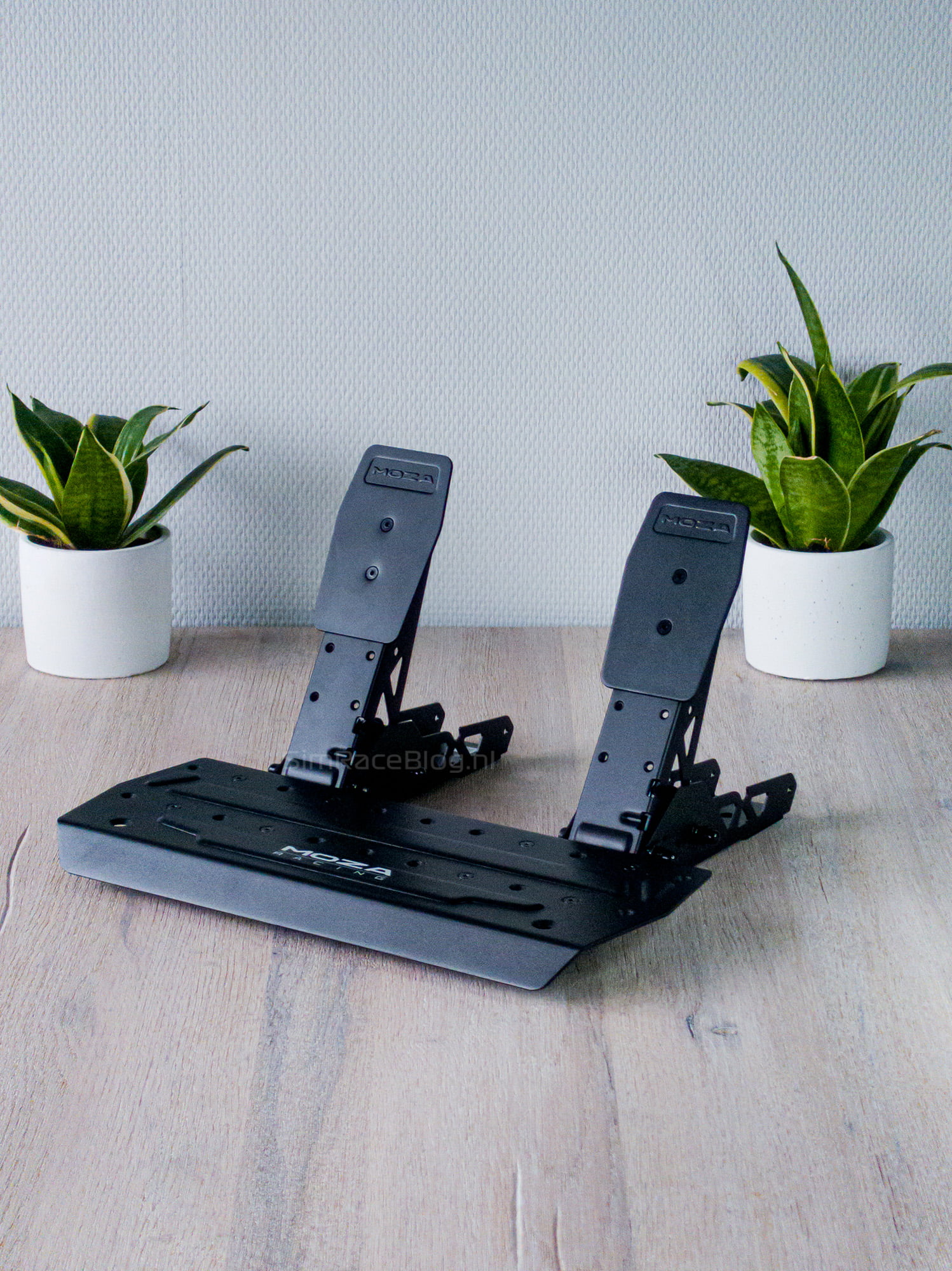


This isn’t the only box we get to unpack. We also have a separate box containing the SR-P Lite Clutch Pedal. Once again, this box boasts a sleek appearance, featuring a clean white design with a blue top, showcasing the pedal in an elegant manner. From this box, we slide out a block of soft black foam. Upon removing the top, we find the clutch pedal neatly placed in a pre-shaped cutout. The box contains nothing but the clutch pedal itself.
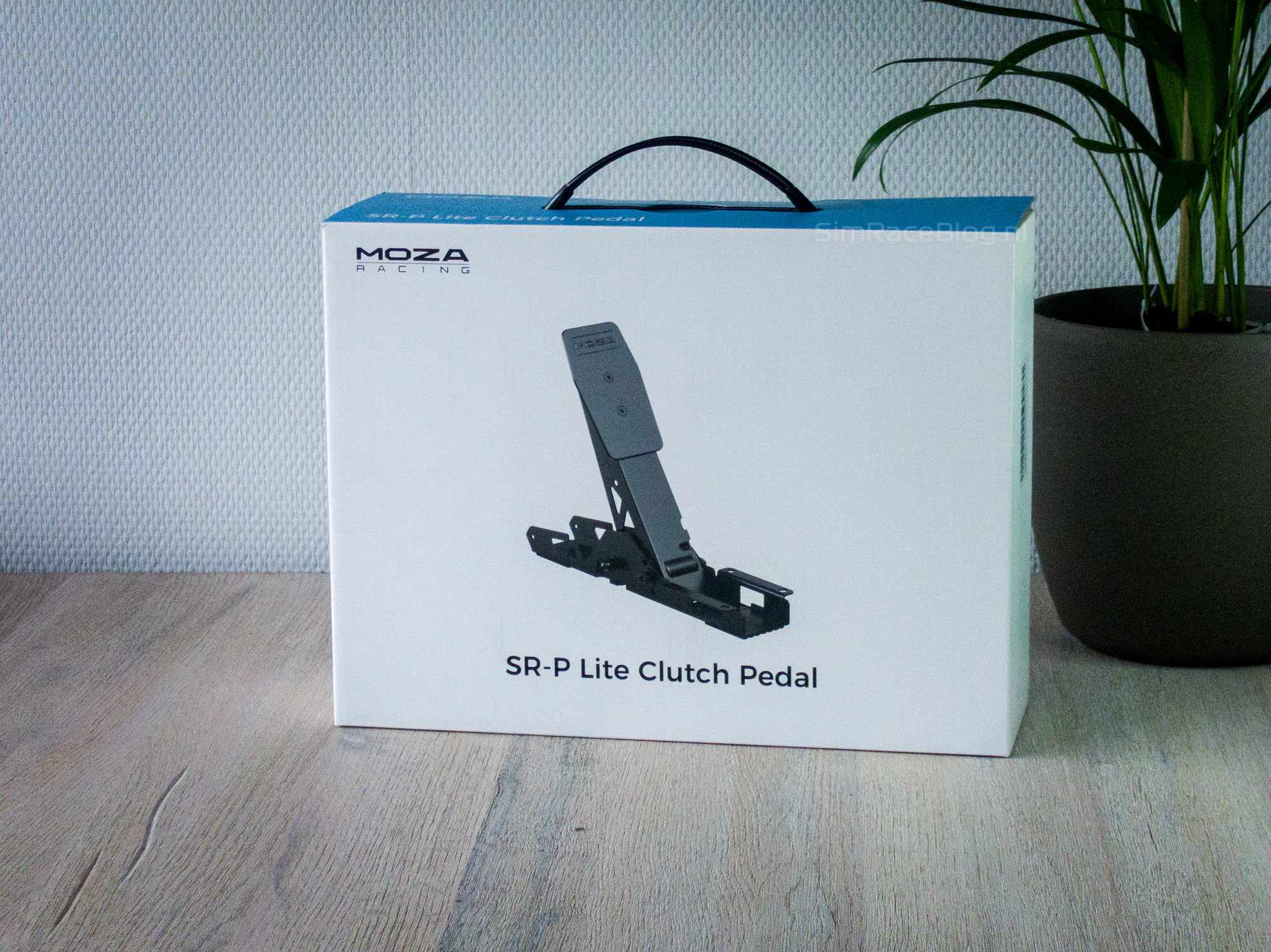

Lastly, we’ve received the Performance Kit for the R5 Bundle. It comes in a small white box with a product photo on the front. Upon opening the box, there’s a small piece of paper on top with mounting instructions. Once we remove this paper, we notice that the inside of the box also features black foam, containing the Performance Kit within.
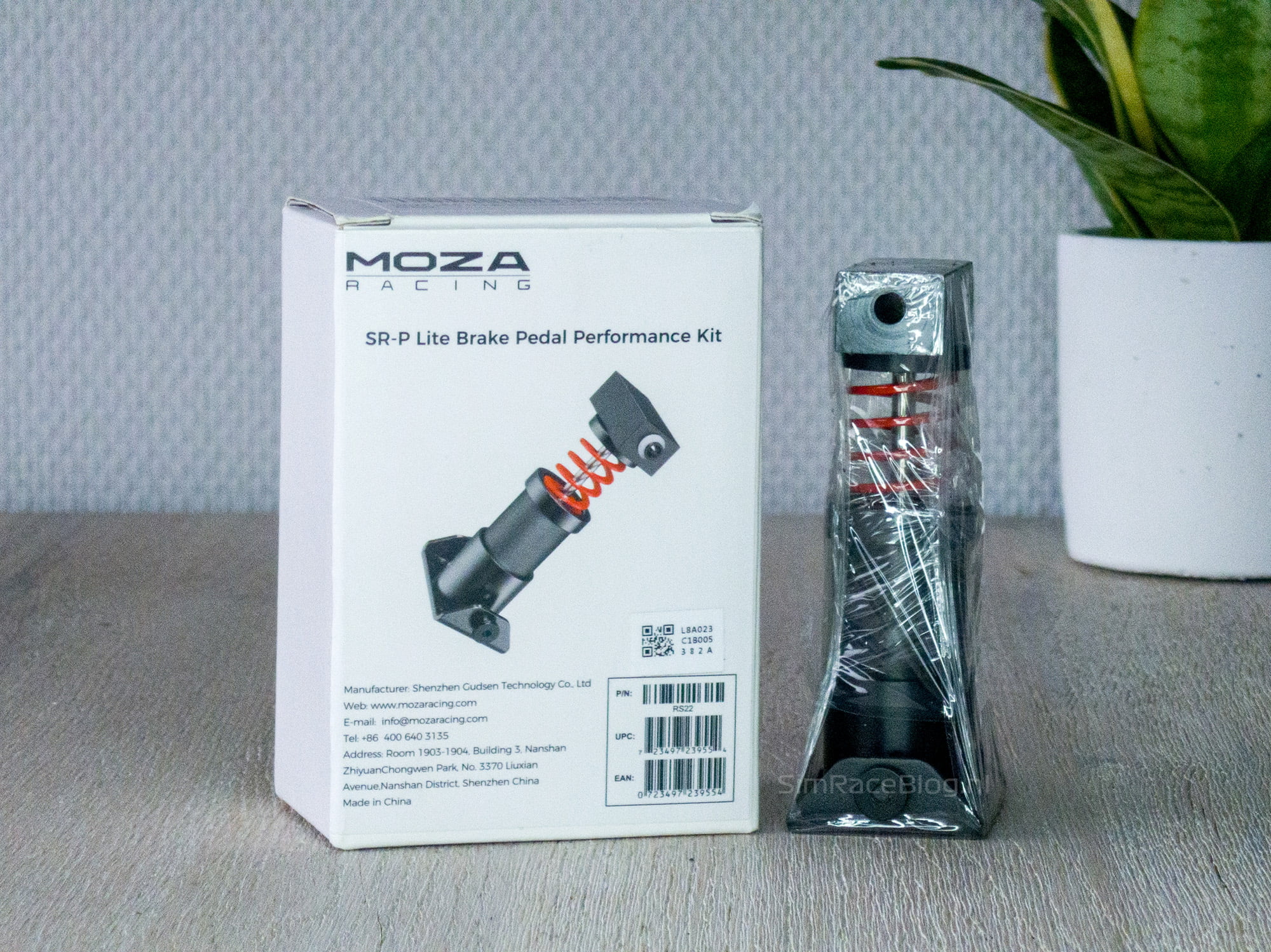
Engineering & Quality
The Steering Wheel
Our initial impression of MOZA Racing’s included “ES Steering Wheel” is highly positive. It feels robust and sturdy while presenting itself as an aesthetically pleasing wheel. The steering wheel has an attractive stealth look with its black base color, complemented by white accents on the button box to add a touch of contrast. The MOZA Racing logo at the center of the wheel serves as the finishing touch. The actual steering wheel itself adopts a D-shaped design, featuring a sporty flattened bottom, reminiscent of the steering wheel used in the Audi R8. With a diameter of 11 inches (almost 280mm), the wheel has a comfortable size that feels just right in our hands—neither excessively large nor too small. The contours for thumb placement at the three and nine o’clock positions enhance the grip and contribute to the overall enjoyment of holding this wheel. The comfort of the steering wheel is further enhanced by the pleasant leather used on its rim. This isn’t ordinary leather but rather “Microfiber leather”, a synthetic leather made with polyurethane. Known for its almost authentic feel compared to real leather, Microfiber leather is also appreciated for its durability. The ES Steering Wheel showcases this leather neatly stitched along the edges. At the twelve o’clock position, a white marker is present, crafted from a separate piece of (synthetic) leather.


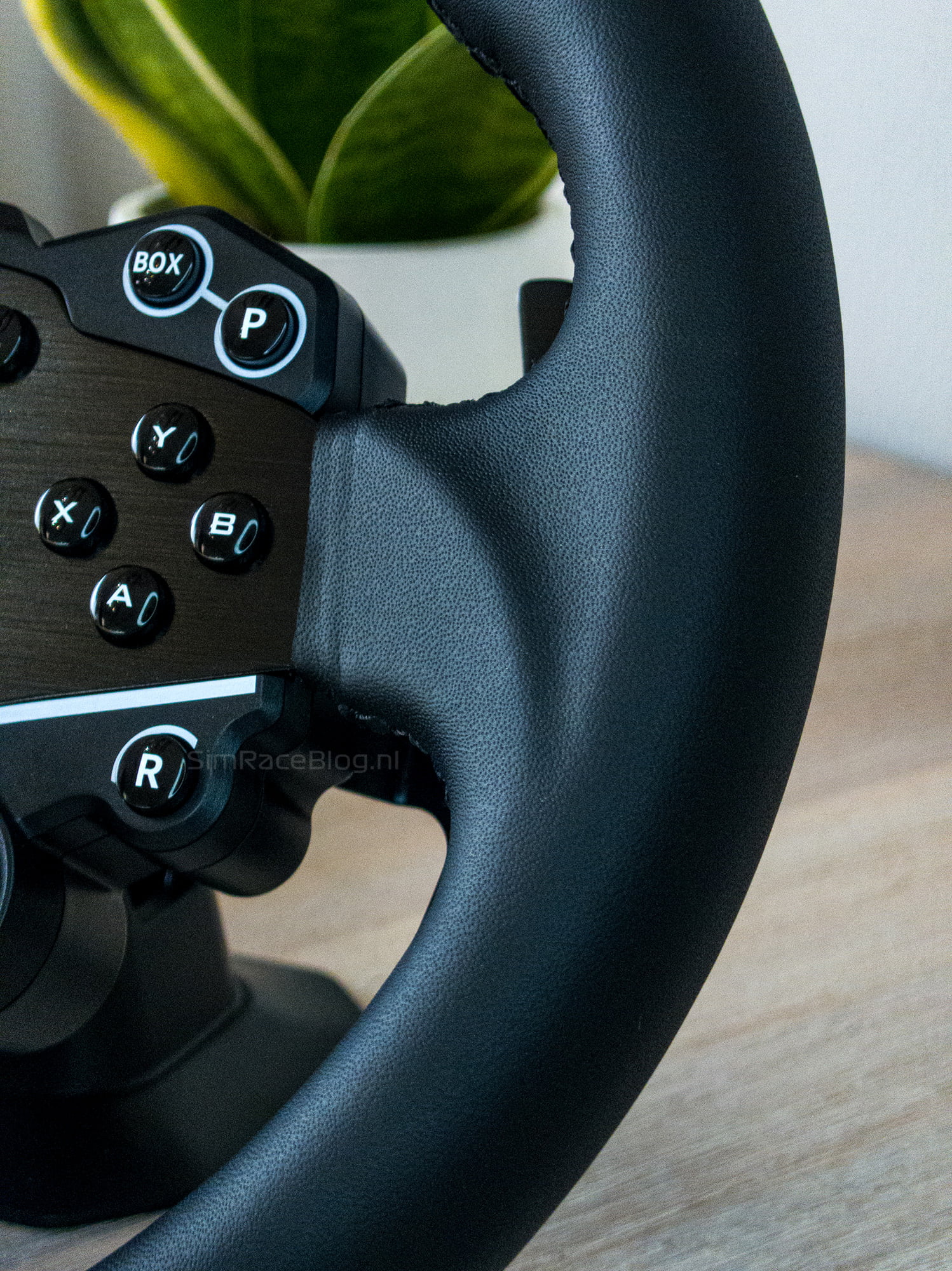

Besides the importance of a comfortable feel, it’s crucial that the steering wheel comes equipped with the necessary controls. In the center of the steering wheel, attached to the aluminum base frame, there’s a plastic button box secured with six hex screws. This button box, in total, features 22 push buttons and two paddle shifters on the rear.
In the two upper corners of the wheel, just above the aluminum, there are two buttons with white markings, easily operable with the thumbs. These are straightforward black buttons with neat white labels. Between these two sets of buttons, there’s a thin black plastic strip where the RPM LEDs are positioned. Passing through the aluminum base frame on the left side of the wheel, there’s a D-pad easily reachable with the left thumb. Slightly above, you’ll find an additional function button. On the exact opposite side of the wheel, the right side, there are four function buttons resembling those found on an Xbox controller. Just above this YBAX pattern, there’s another standalone function button. Towards the bottom of the wheel, we encounter a few uniquely shaped buttons. In the bottom left corner, next to a regular push button, there’s a large concave button with a raised edge around it. Conversely, in the bottom right corner, a similar but mirrored layout presents a convex button. Finally, in the central lower part, there are four rectangular buttons, completing the wheel’s control layout. Despite the wheel being quite well-equipped with buttons, we still feel that it lacks a simple encoder or rotary knob to make it truly complete.

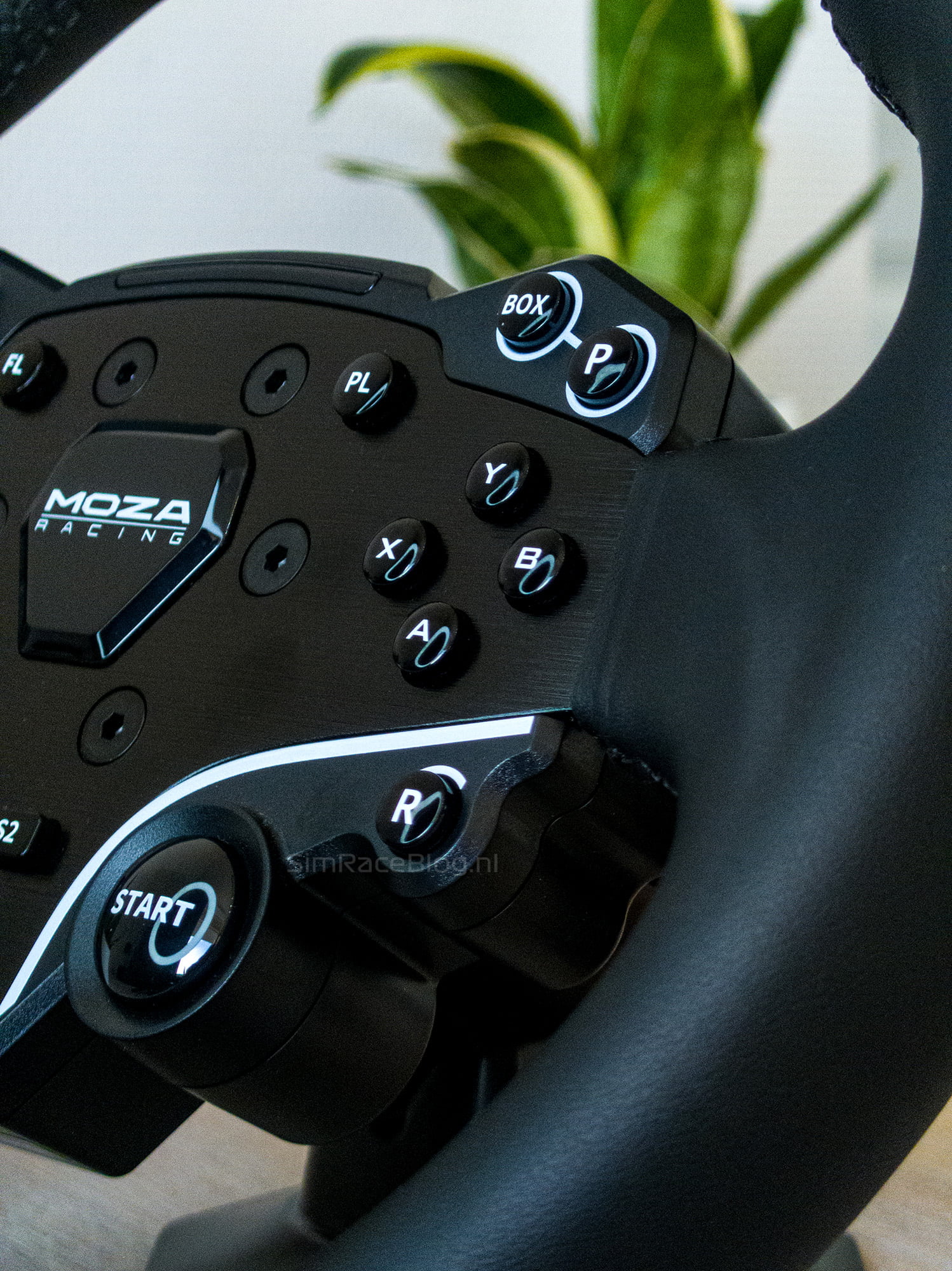


On the backside of the ES Steering Wheel, we find the two paddle shifters. These aluminum paddles are generously sized, making them easily accessible to all fingers positioned at the back of the wheel while driving.
Finally, at the back of this wheel, there’s the connection to the wheelbase. The quick-release system at the rear of the wheel features a premium aluminum housing with a glossy black finish. Surrounding the interior of this housing are ten metal balls that securely click the wheel onto the output shaft of the wheelbase.
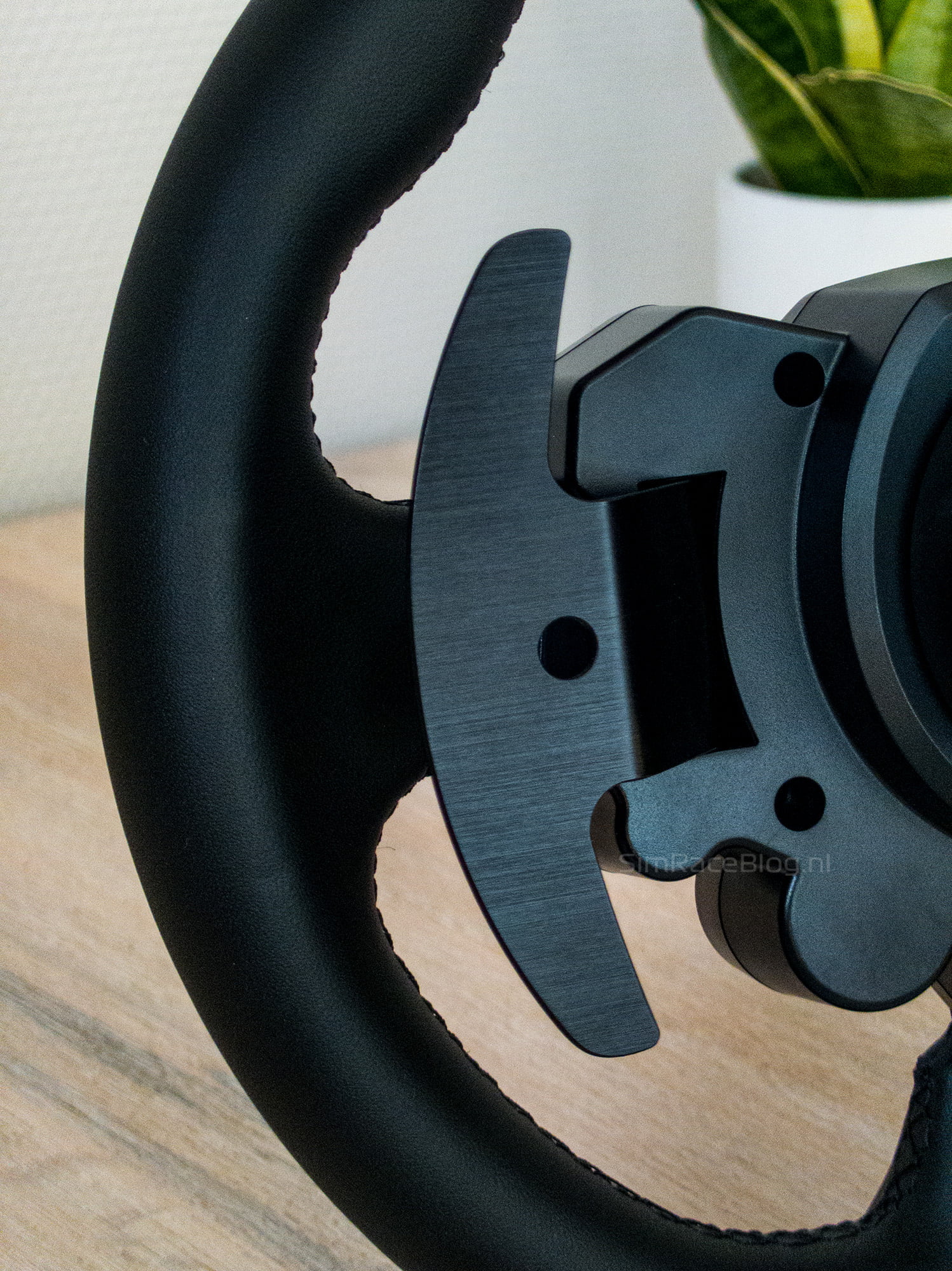

The Wheelbase
As the name suggests, the MOZA Racing R5 bundle includes the MOZA R5 wheelbase. This is a Direct Drive (DD) wheelbase capable of generating a torque of up to 5.5Nm. A Direct Drive system is a force feedback system that operates without the use of gears or belts. As the name implies, it involves a direct control of the electric motor on the output shaft of your wheelbase. While this system was once reserved for high-end setups with substantial torque, we now see a growing trend of more affordable DD wheelbases entering the market. The advantage of this system is that, compared to gear or belt-driven systems, it can provide much more precision in transmitting the electric motor’s feedback to the driver. Additionally, it allows the driver the flexibility to have a customizable degree of rotation, removing the limitation to a fixed amount of rotation.

The R5 wheelbase is crafted from aviation-grade aluminum with an appealing matte black finish. In terms of size, it’s a highly compact base, standing at a mere 124mm in height and 156.8mm in width. From the back of the housing to the front end of the steering shaft, the wheelbase measures 173.9mm in length. This makes the R5 even more compact than its direct competitor, the Fanatec CSL DD. To power this wheelbase, there’s an included adapter capable of converting both 110V and 220V voltage to a 12V DC voltage. This voltage is then fed into the wheelbase through the connection at the back. Additionally, at the rear, you’ll find various other connections. There’s a port for MOZA pedals, a dashboard connection, and, of course, a USB port to link the wheelbase to a computer or Xbox console. This connection boasts a refresh rate of 1000Hz to transmit the 15-bit signal from the wheelbase to your PC. Finally, the on/off switch, a small round push button, is located on the back of the housing, next to the power connection.
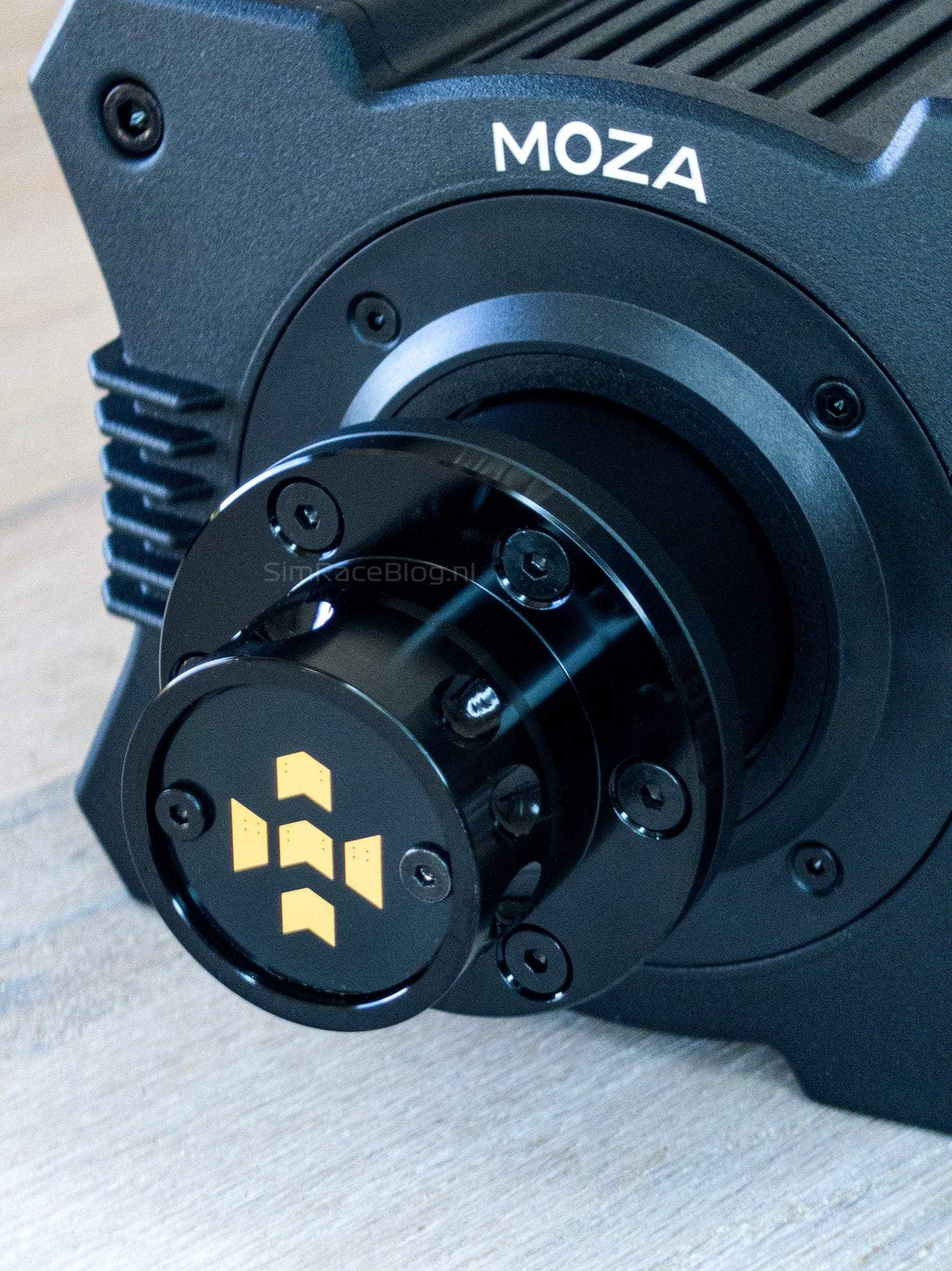
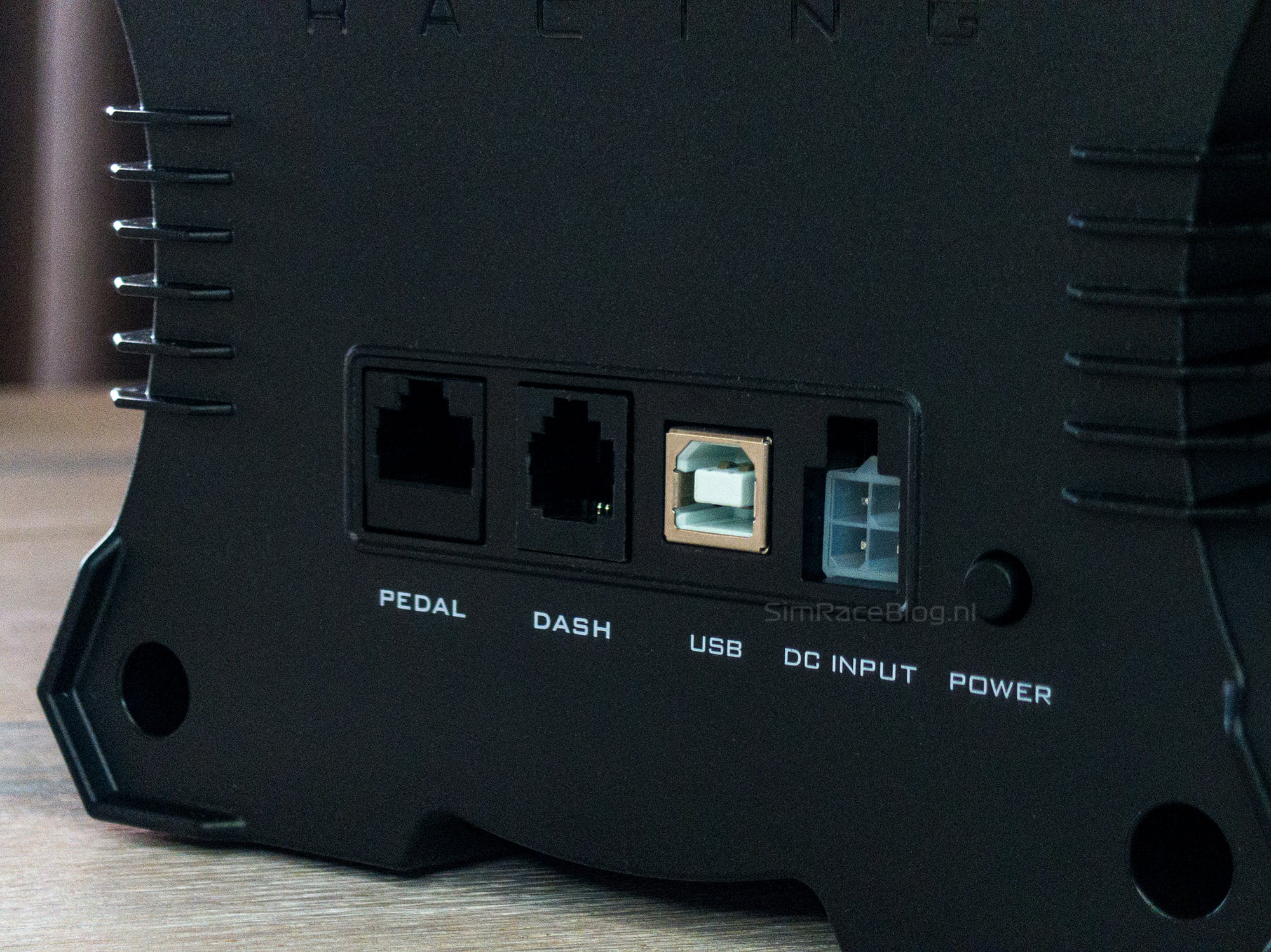


The Pedals
The pedals included in the MOZA Racing R5 Bundle, the SR-P Lite Pedals, appear robust at first glance. Three seemingly identical pedals boast a simple yet sleek appearance. All three pedals are constructed from steel and feature a sturdy base with an attached wide pedal arm. At the top of this arm, there’s a nicely adjustable footplate bearing the MOZA logo. Each pedal is equipped with a Hall sensor, measuring the pedal position and transmitting it to our PC through the wheelbase. For pedal resistance, thick torsion springs are integrated into the design. Notably, the brake pedal has a thicker spring than the clutch and gas pedals, providing a heavier feel. To enhance the authenticity of the brake pedal, MOZA Racing has included the Performance Kit for the SR-P Lite pedals, which we will install later. The brake pedal also serves as the central component of the pedal set. It features a controller to which the gas pedal and clutch are connected. Naturally, there’s a port to link the controller to the R5 wheelbase, ensuring the signal is transmitted to the computer through the USB connection.





The three pedals are all attached to the baseplate of the pedal set. This baseplate features two rows of holes, allowing the pedals to be adjusted in width for the most comfortable setup. Made of steel and coated in black, the baseplate showcases the MOZA Racing logo in white letters. The advantage of this plate is its versatility—it can be used both on the floor and on a pedal deck. If you prefer placing it on the floor, rubber caps under the pedals keep the set securely in place. However, if your floor is too slippery or you tend to apply more force than necessary, MOZA also includes two double-sided stickers. These stickers can be affixed under the pedals to ensure a firm grip on your floor. Keep in mind that this works best on smooth floors and may not be suitable for carpets or uneven surfaces. If you want to mount the pedals on your rig, this is achievable with the included mounting materials in the box.
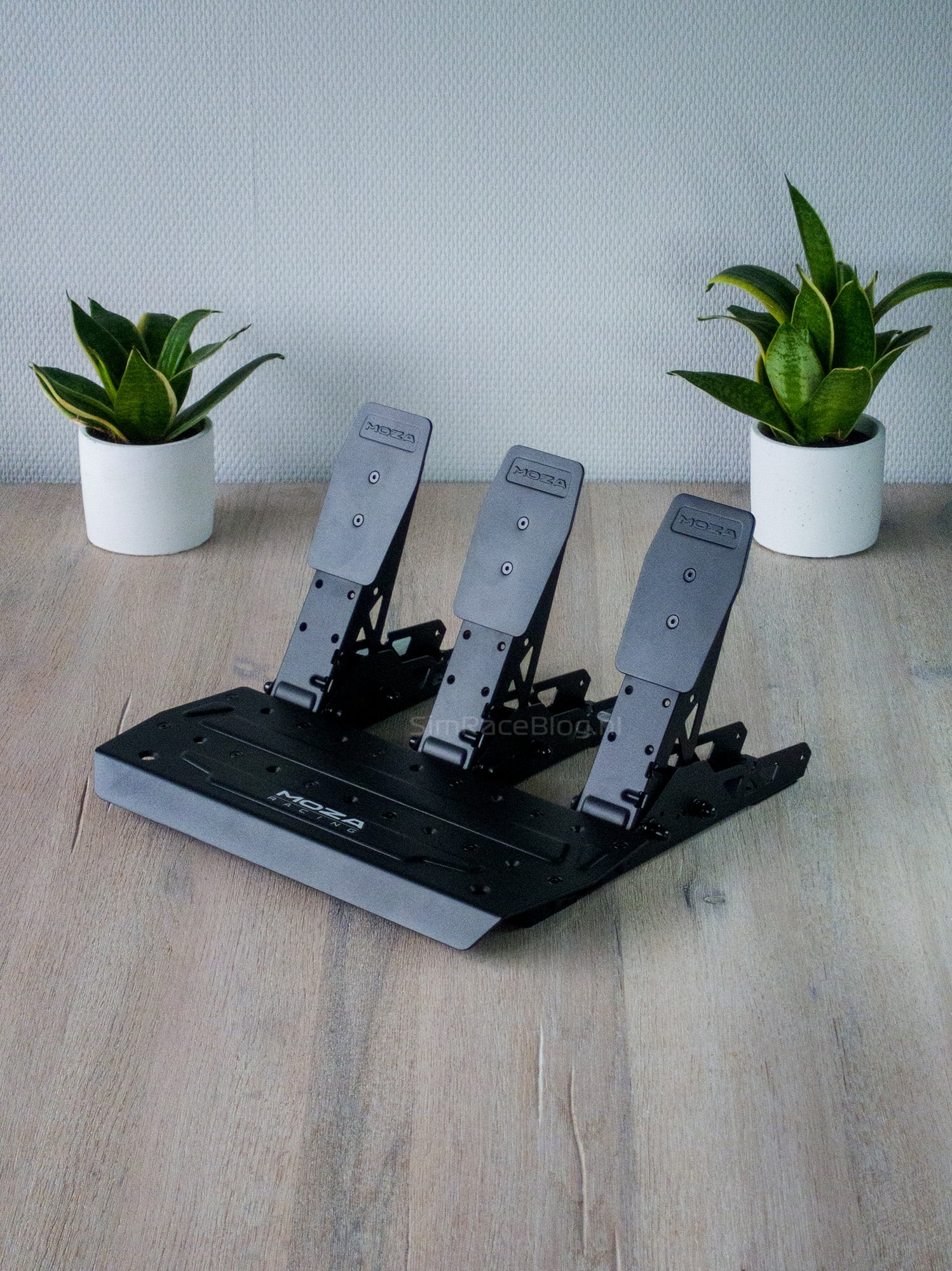
Mounting
Before we can set up our gear on the Formula Sim Rigs Avanzata, we need to attach the SR-P Lite Clutch Pedal alongside the other pedals on the baseplate. This process is pretty straightforward. Each pedal is secured to the baseplate with four hex screws. Thanks to the two rows, each with eleven holes, the distance between the pedals can be adjusted as needed
With all the pedals in place, we can now mount them on our rig. Thanks to the adjustable aluminum profiles on our pedal deck, aligning the pedals is a simple task before securing them in place. While there are indeed appropriate fasteners and tools provided, unfortunately, the materials for mounting these pedals on aluminum profiles are missing. Fortunately, we have our own collection of T-nuts and bolts, allowing us to have everything neatly assembled in the desired position within five minutes. The pedals are secured with one M8 screw behind each pedal, and on the two front corners of the baseplate, a long M6 screw is used to prevent the pedals from tilting backward during driving.

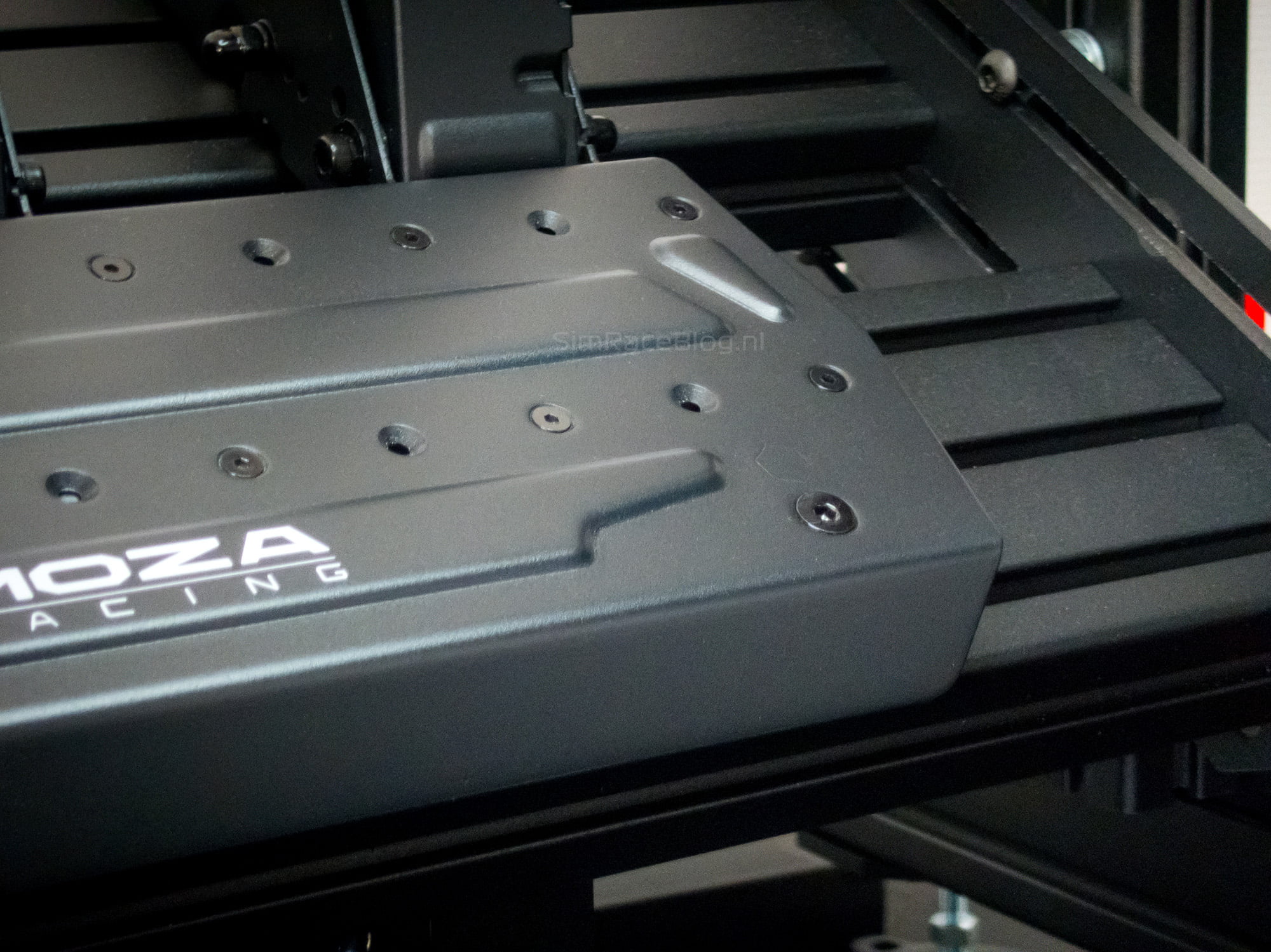
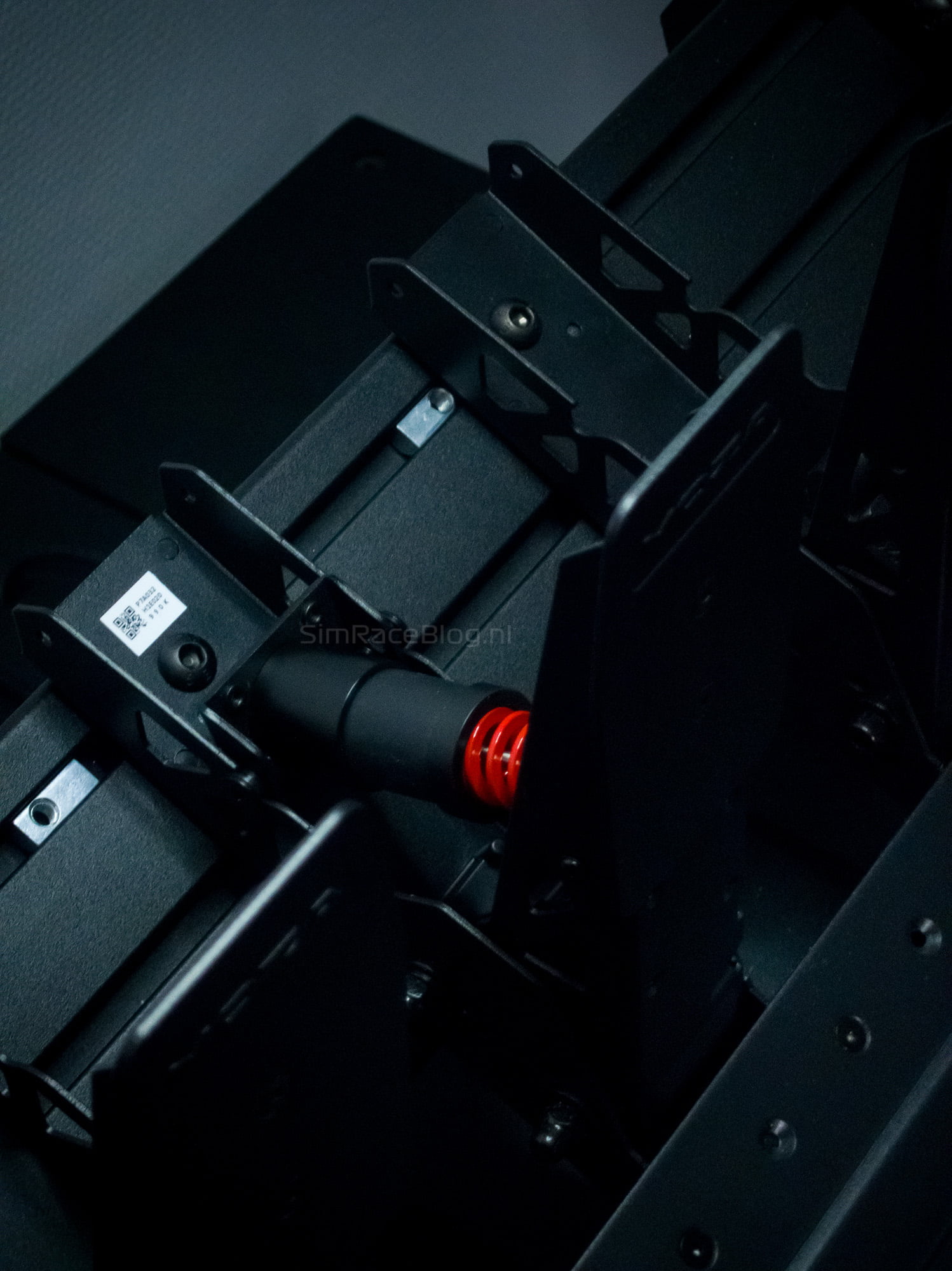
As we mount the MOZA Racing R5 bundle on a rig, we opt not to use the supplied table clamp. Instead, we place it directly on the universal wheel deck of our rig. The R5 wheelbase has a hole pattern at the bottom that neatly aligns for attachment to most universal wheel decks. Unfortunately, we don’t have such a universal deck, so we can secure the wheelbase in only two of the four positions. This is not a problem with a peak torque of 5.5Nm, and the wheelbase stays firmly in place, showing no movement when tested by hand. The last task is to connect the cables. The included data and power cables have a convenient length. The plug from the pedals easily reaches the back of the wheelbase with a slight detour, where we can effortlessly insert the power cable and USB cable. With that, the wheelbase is ready for use.
We don’t really need to elaborate on the steering wheel. It naturally clicks perfectly onto the output shaft of the wheelbase, and thanks to the internal connections, it’s ready for use without the need for external cables.

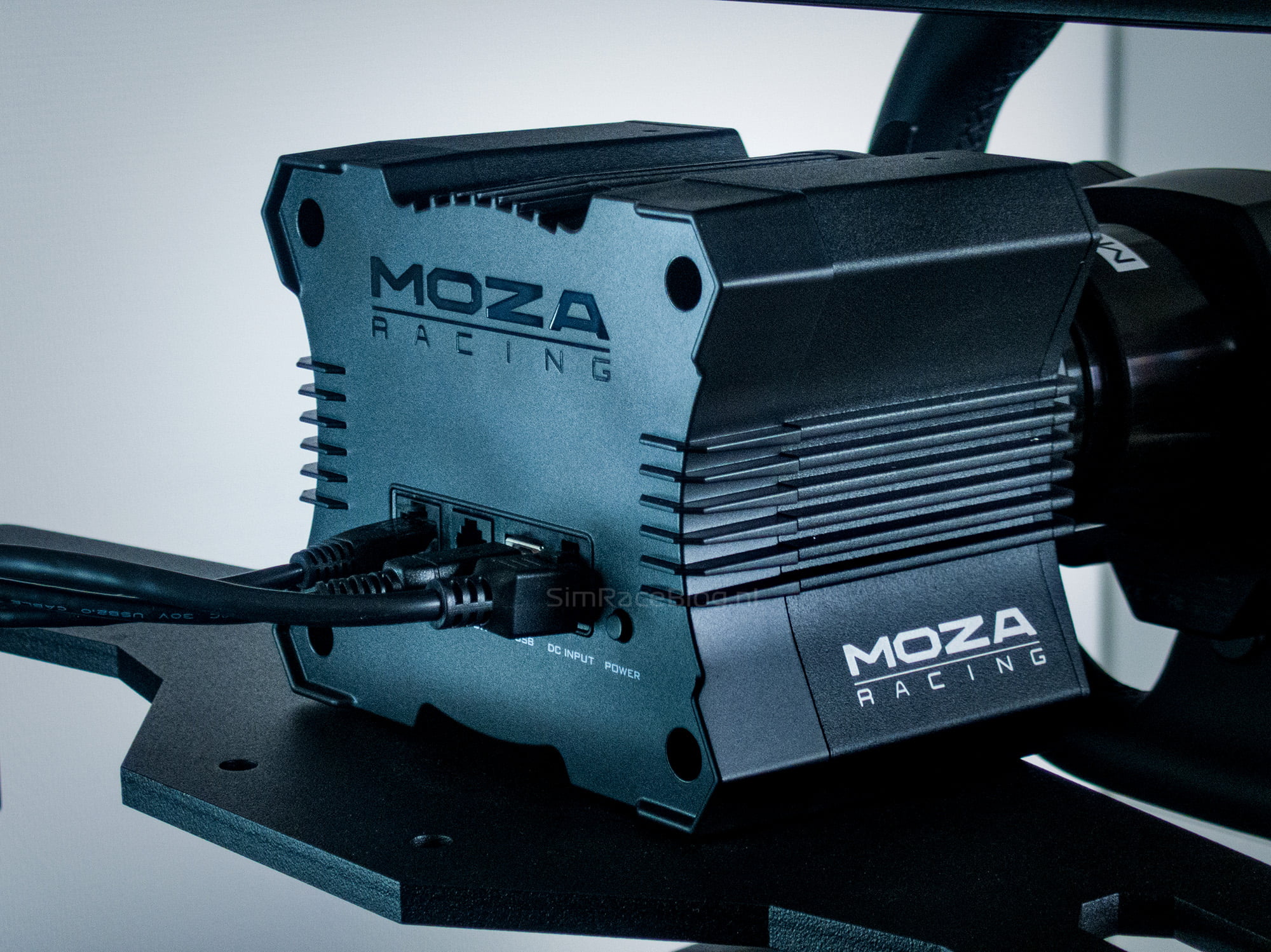
Software
Before the virtual starting lights can go out, and we can put our new equipment to the test, there’s one more step: the software installation. MOZA Racing has its own ecosystem, and of course, it comes with its own software. You can easily and quickly download the “MOZA pit house” software from the somewhat hidden downloads page on the MOZA website. Upon the first launch, the software promptly detects the connected MOZA equipment, and all that’s left is to click “Finish.” The R5 bundle is now ready for use.
The Pit House software is incredibly user-friendly. On the main page, we can adjust all the main parameters for the steering wheel, wheelbase, and pedals. If you want to delve deeper, each MOZA product has its own tab where you can customize settings to your liking. The pedal tab is straightforward, allowing us to quickly calibrate the pedals and apply a possible pedal response curve. The steering wheel page is also uncomplicated, allowing users to set the rev-lights or choose from presets, with options to have the LEDs respond early, normally, or late based on the RPM.
The tab for the wheelbase is more extensive. A direct-drive wheelbase is a system that offers a wide range of variables to customize the steering feel to your liking or even for different types of cars. It can be a challenge to navigate through all the parameters and tailor the wheelbase completely to your preferences. This complexity is reflected in the five subpages found in the wheelbase menu. Fortunately, the software is very organized, and each variable has a small “!” that provides information about how adjusting the value affects the steering behavior. If this still seems overwhelming, MOZA Racing comes to the rescue by offering a comprehensive range of presets. You can choose from presets for Formula 1, Drift, GT, Rally, and many more. Are these fixed settings? No! Each setting allows you to choose from specific presets. For example, under the Formula 1 setting, you can select a preset for the F1 23 game but also for Assetto Corsa.
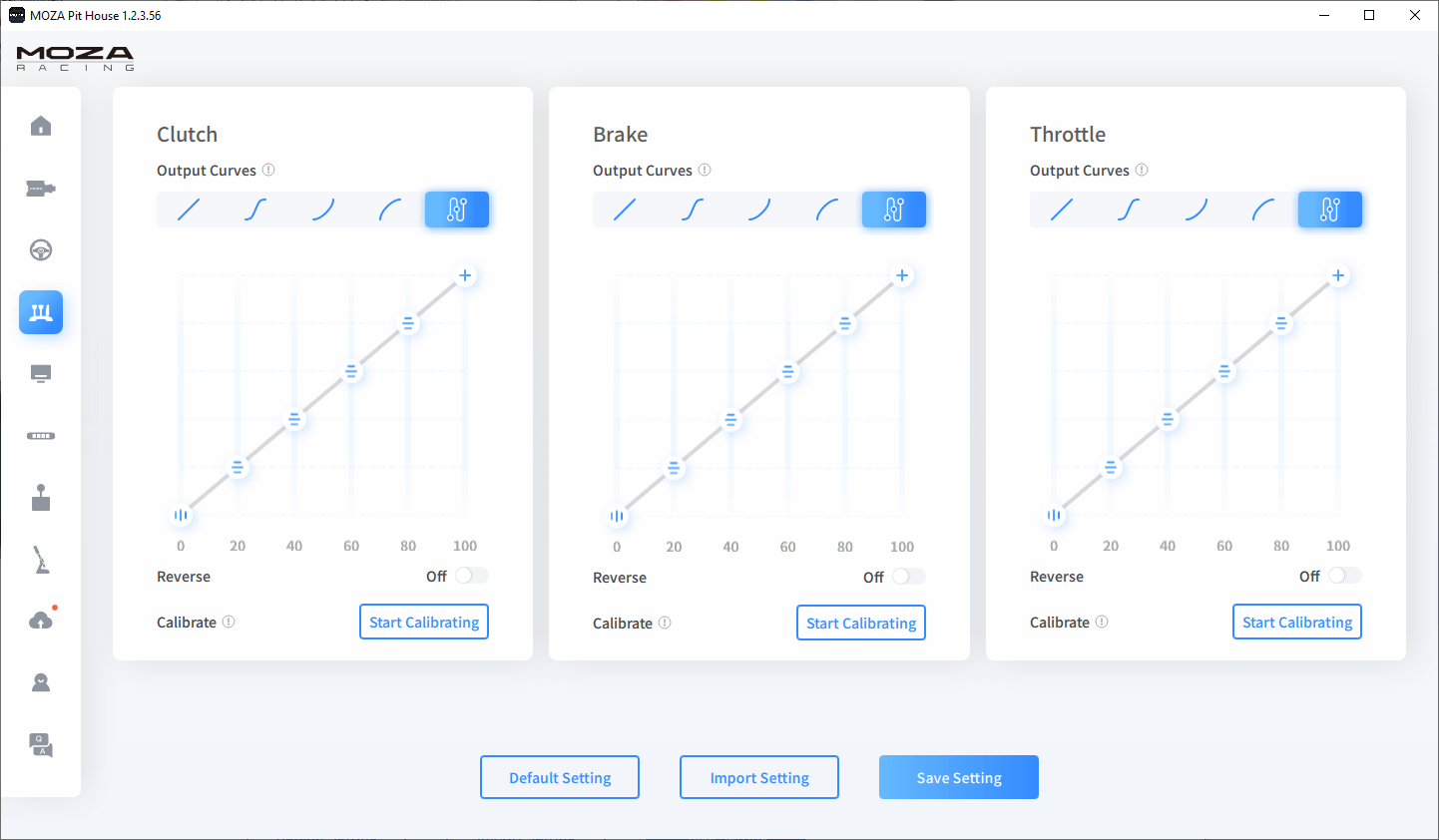



Using the R5 Bundle
With everything neatly assembled, adjusted, and set up, we can finally settle back into our rig and hit the virtual road with enthusiasm. Thanks to the MOZA R5 wheelbase’s numerous FFB presets, we’re eager to embark on varied testing sessions. One of our favorite sims remains the original Assetto Corsa due to its versatility in terms of race classes and car models. In this sim, we’ll test the presets for drifting, Formula 1, GT cars, and karting. For rally driving, we’ll make a detour to Dirt Rally 2.0
The Steering Wheel
The steering wheel is perhaps the most cherished component of the sim rig—it’s what you constantly look at, hold in your hands, and use to control most functions. Fortunately, the MOZA ES Steering Wheel is a wheel that we find very pleasant to use. The first thing that impresses us is the material of the steering wheel. This microfiber leather feels very soft and comfortable, even during extended sessions. The material remains fresh, preventing any discomfort from sweaty or sticky hands. Despite the relatively smooth texture of the material, we don’t experience any issues with this. There’s no need to grip the wheel extra hard, and it feels comfortable even without gloves
In terms of ergonomics, we consider the ES Steering Wheel an excellent wheel. The wheel itself has a satisfying thickness, allowing our hands to comfortably grip it. With both hands on the wheel, we can easily operate almost all the buttons with our thumbs. Only for the buttons towards the center of the wheel do we need to release our hands partially or completely. All the push buttons on the wheel feel smooth in use and require a pleasant amount of force to press. They are sturdy enough to avoid accidental presses but still smooth enough for easy operation. While driving, we find the number of buttons on the wheel sufficient. We can assign most basic functions like DRS or ERS boost conveniently close to our thumbs. However, for driving more complex cars with engine mappings or hybrid systems, the wheel falls a bit short. It’s possible to assign these functions, but it can make the layout a bit cluttered. Additionally, for tasks such as adjusting the brake balance, we would have appreciated a rotary encoder, even if it’s a simple one. Nonetheless, with 22 push buttons, the wheel remains highly usable for any type of car!
The shift paddles on the back of the wheel are also pleasant to use. The travel is not too long, and there’s a clear click when shifting. Since these paddles use a more traditional system, similar to what we find on the Thrustmaster T150, and not magnetic shifters, it’s important to utilize the entire range for a successful shift. It’s possible to pull the paddle slightly toward us without activating the internal switch. While this isn’t a significant issue, it might lead to missed shifts during rapid shifting. Nevertheless, the paddles are comfortably positioned under the fingers when holding the wheel, allowing for assertive shifting and preventing miss-shifts.
Lastly, we must mention the rev lights on this wheel. Unlike most wheels that use clearly separated LEDs, here, the LEDs are hidden behind a small black strip. The beauty of this design is that it conceals a color pattern within the strip. As the RPM increases, the strip lights up with a green color that transitions to yellow and then to red. Although the strip doesn’t smoothly illuminate in one continuous motion, it’s undeniably a unique addition to the wheel, giving it a distinctive character.



The Wheelbase
Lastly, we have the R5 wheelbase in the bundle, boasting a 5.5Nm force feedback that should not be underestimated. While 5.5Nm might not sound like a lot of torque, we are treated to a substantial amount of force feedback. During driving, depending on the chosen profile, we experience a solid sensation in the wheel, with the feedback progression feeling natural and the details of the road surface being well represented. Even in high-speed corners, we need to firmly grip the wheel to keep it in place; the R5 seems to effectively utilize its 5.5Nm to make the driver work for their lap times. We are genuinely impressed by the power we feel from this wheelbase, positioned at the entry level of the higher-end segment. However, wheelbases with lower power often encounter clipping issues relatively fast. If we set both the force feedback in our sim and the control software to 100%, we easily reach the 5.5Nm limit in high-speed corners. By pushing the wheelbase to its maximum power while navigating the turn, there is no excess capacity to convey details such as curbstones. To continue feeling these details in high-speed corners, a trade-off must be made by slightly reducing the force feedback in the sim. This way, we create a small buffer that can be used to convey subtle details.
One of the great features of the MOZA Racing R5 is embedded in the software. As mentioned earlier, in the Pit House software menu for the wheelbase, you can choose from various profiles tailored to different types of cars. Naturally, we feel compelled to experiment with everything a bit. The results are somewhat varied, but that’s not a problem at all! In cases where we’re not entirely satisfied with a preset, we can fine-tune it to our liking. With the explanations provided by MOZA Racing for each setting in the software, optimizing force feedback is straightforward for every sim racer, whether they are beginners or experienced. We find that the preset for GT racing is already close to the sweet spot, offering a smooth feedback progression and conveying all the details of the circuit effectively. On the other hand, we need to pay a bit more attention to the rally setting to make it comfortable to drive. One thing we found a bit bothersome is that the rotation degrees of the wheel are automatically adjusted for each setting. While this is not a problem in itself, if you set your wheel to 1080º in Assetto Corsa using Content Manager, you wouldn’t want to readjust it for each type of car. These are, however, minor inconveniences since you can easily drag the rotation degrees back to 1080º in the Pit House software, but it does require an extra step.
The “Hands-off protection” feature in the Pit House software is an impressive addition. This feature detects when you no longer have your hands on the wheel. When transitioning to more advanced wheelbases, it’s important to realize that these are no longer toys, and improper use can cause serious injuries. It is therefore recommended to remove your hands from the wheel in the event of a crash. Additionally, unforeseen circumstances may arise where the wheelbase receives incorrect information from your computer, causing the wheel to turn in all directions. Some manufacturers provide an external emergency button for such situations, allowing you to cut off power to the wheelbase to stop the wheel from turning. MOZA Racing’s “Hands-off protection” feature goes beyond a simple emergency button. It recognizes the moment when you are no longer holding the wheel and automatically stops steering the wheelbase after a few seconds. This means it automatically stops the wheel from turning if it appears to be moving unpredictably. When you want to resume driving safely, you don’t need to turn the wheelbase back on or reset it. Once the wheelbase detects input, the force feedback is automatically reactivated, allowing you to continue driving immediately. During testing, this optional feature proves to work well. After intentionally driving the car off the track and keeping our hands off the wheel for a few seconds, the wheel stopped moving until we turned it again. This feature could be a valuable addition to other wheelbases that are delivered without an emergency cutoff.
The Pedals
The SR-P Lite Pedals included in the MOZA Racing R5 bundle pleasantly surprise us during use in a positive way. Despite there being relatively few adjustments available for these pedals, we find the pedals very comfortable in use. All pedals feel comfortable under our feet while driving in socks. The metal footplates have a nice size and a pleasant design, making them feel comfortable. Additionally, the pedals provide a good sense of grip, allowing them to smoothly slide under our feet without feeling overly slippery. Another contributing factor is the fact that all three pedals have an excellent amount of travel. Although we personally prefer a shorter stroke on our pedals, we do not mind how deep we need to press the pedals. Each pedal can be fully depressed without feeling like we have to overextend our ankle.
Despite the pedals sharing many similarities, each serves a distinct purpose with specific requirements. Let’s start with the clutch pedal, the SR-P Lite Clutch Pedal, which needs to be purchased separately as part of the R5 bundle. Essentially, this pedal is the same as the standard throttle pedal included in the R5 bundle. Fundamentally, it’s a decent pedal that provides you with the ability to operate the clutch in-game. Unfortunately, like most comparable pedals in this market segment, it lacks sensitivity. While there’s adequate pressure in the pedal, giving you a linear feel, it lacks the characteristic feedback you might expect from a clutch. However, we don’t consider this a drawback for entry-level pedals and believe that MOZA Racing’s clutch pedal feels very robust and of high quality.
The brake pedal usually receives the most attention in a pedal set. In the SR-P Lite pedal set, the brake pedal deviates from the others. Unlike the clutch and throttle pedals, the brake pedal has more resistance, thanks to the slightly thicker torsion spring incorporated into it. In its basic form, this pedal is certainly not bad and serves as a welcome improvement when transitioning to more serious sim equipment. However, when being honest; the feel remains somewhat behind compared to a realistic brake pedal. Fortunately, MOZA Racing provides a solution in the form of the performance kit. After a few hours of driving, we decide to install the optional performance kit on the brake pedal. The installation is straightforward: you screw the top of the kit into the holes at the back of the pedal, and then you “click” the bottom into a notch in the pedal’s base. The kit itself consists of a shaft with a spring and a rubber bushing, creating a more realistic feel with progressively increasing pressure as you press the pedal deeper. Since we’ve mounted this kit after already using the pedal set, we need to recalibrate before hitting the digital tracks again. Fortunately, in the Pit House software, this is a matter of seconds and we’re back on track in no time. The feeling in the brake pedal has undoubtedly become much more authentic than before. We sense a more realistic build-up, providing natural feedback from the brake pedal. One thing we consider a bit of a drawback is that, despite the performance kit, the pedal still relies on its Hall sensor. This means that, ultimately, the position still determines which signal goes to the computer. Personally, we would have preferred the performance kit to also include an upgrade to a load cell. Nevertheless, we give the pedal, including the performance kit, a solid rating.

The last pedal in the SR-P Lite pedal set is, of course, the throttle or accelerator pedal. Regarding this pedal, we can be brief—it’s a delightful pedal with no real drawbacks in our eyes. The pedal has a pleasant resistance, operates smoothly, and feels sturdy enough for robust use when required
Conclusion
At the end of the day, we are convinced that MOZA Racing has put together a solid package with the R5 bundle, allowing (enthusiastic) sim racers to enter the higher segment of sim racing hardware at a reasonable price. It is a robust set that has left a positive impression on us, covering the steering wheel, pedals, and wheelbase
The ES Steering Wheel included in the MOZA Racing R5 bundle has a sleek look with its color pattern and chosen materials. The use of synthetic leather not only gives the wheel an attractive appearance but, in combination with the wheel’s shape, also provides a highly comfortable feel. With its 22 buttons and two paddles on the back, functionality is abundant, though the addition of a simple rotary knob or encoder would have been appreciated. Finally, the quick release on the back of the wheel is well-designed and very sturdy.
The SR-P Lite pedals also boast a sleek appearance and a solid feel. They are easy to attach to the baseplate and can be adjusted in width by using the pre-drilled mounting holes. All three pedals feature a Hall sensor to transmit input to your PC, and their differences are relatively minimal. The clutch and throttle pedals are nearly identical, with the throttle pedal being quite enjoyable. However, as a clutch, it lacks a bit of sensitivity. The brake pedal stands out more due to its thicker torsion spring, providing more resistance compared to the other pedals. The brake pedal is decent on its own, but the optional performance kit can be added to enhance its realism, offering a more progressive feel as you press the pedal. It’s worth noting that the performance kit still relies on a Hall sensor rather than a load cell, which could be seen as a drawback. Nevertheless, it remains a pleasant pedal to use.
The R5 wheelbase has left a strong impression on us, delivering a surprising 5.5Nm of force feedback that proves to be robust when necessary. With the right settings, the force feedback feels natural and detailed. To assist with your settings, MOZA Racing’s Pit House software provides a range of presets for different car types. It’s worth noting that not every preset is equally effective and may require some minor adjustments. Fortunately, each parameter comes with a brief explanation to guide you. Finally, the R5 features a safety function that recognizes when you’re not holding the wheel, temporarily interrupting the force feedback. We highly appreciate this safety feature, which can be valuable for other wheelbases lacking a kill switch.
All in all, we can confidently say that we are very satisfied with the R5 Bundle provided by MOZA Racing. It serves as an excellent starting point for those entering the high-end segment of sim racing. With MOZA Racing’s full range of offerings, there’s ample room for gradual upgrades to your setup or the addition of various steering wheels for different racing disciplines.
The MOZA Racing R5 bundle is available for €639.00 excluding VAT and shipping through the MOZA Racing webshop. Additionally, it can be enhanced with the SR-P Lite Clutch Pedal and the Performance kit at an extra cost. The webshop also features a variety of steering wheels and other peripherals such as shifters and handbrakes.
Wil je op de hoogte blijven van SimRaceBlog content, nieuws, aankondigingen en (toekomstige) give-aways? Volg ons op Instagram @simraceblognl en/of ons Discord-kanaal.












